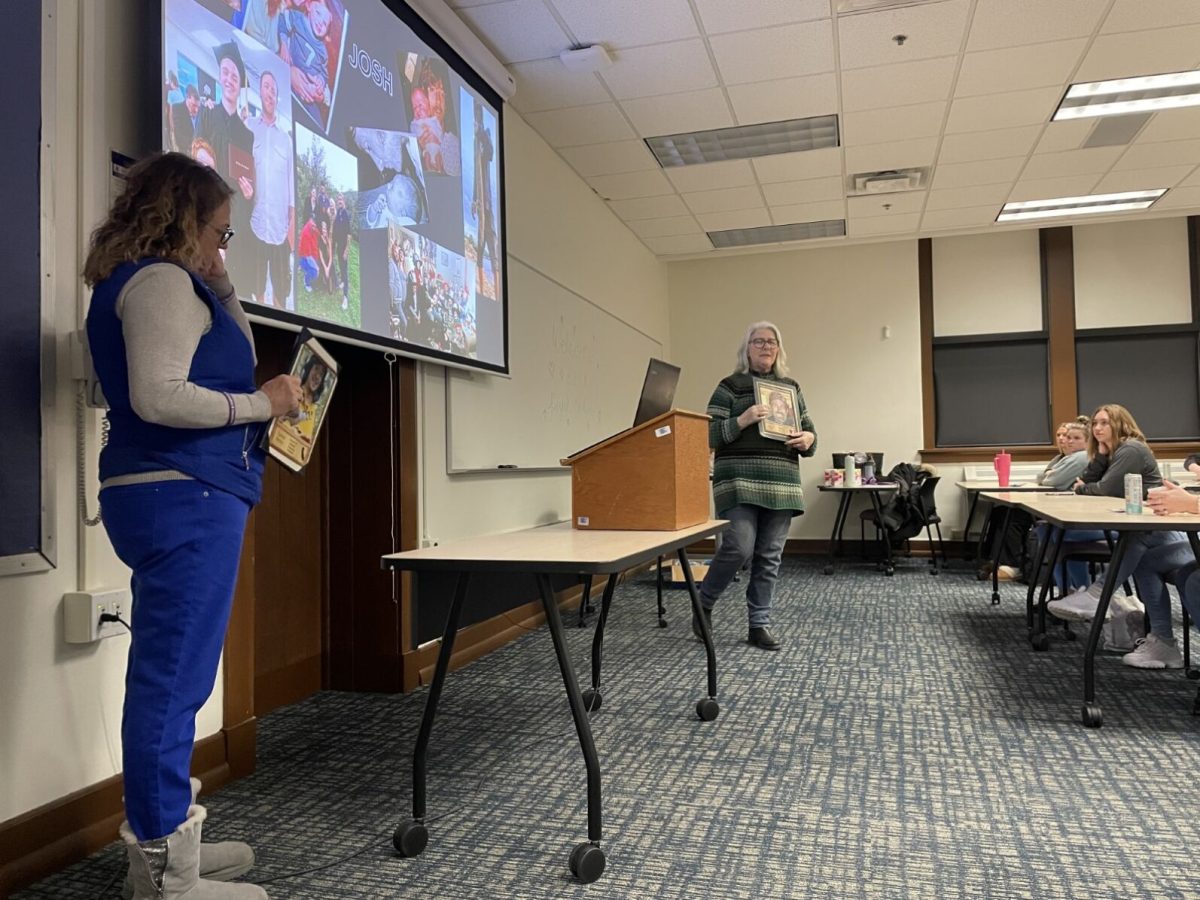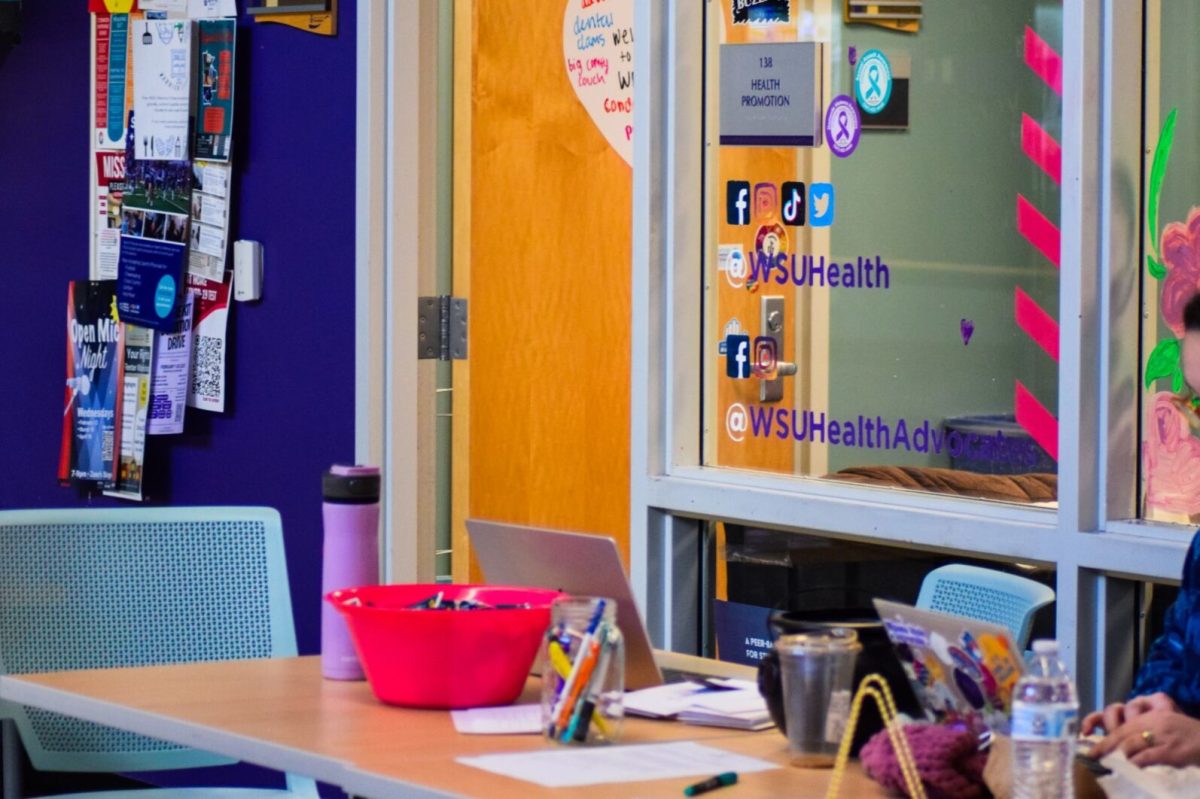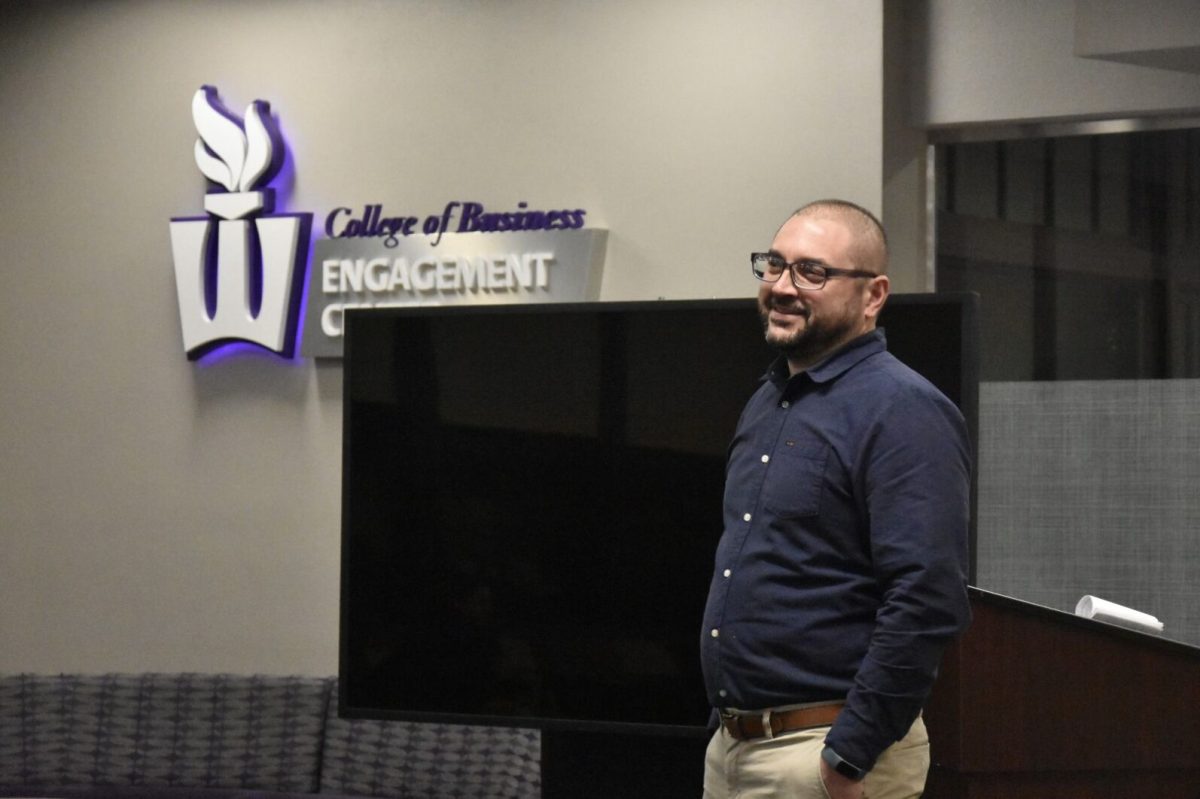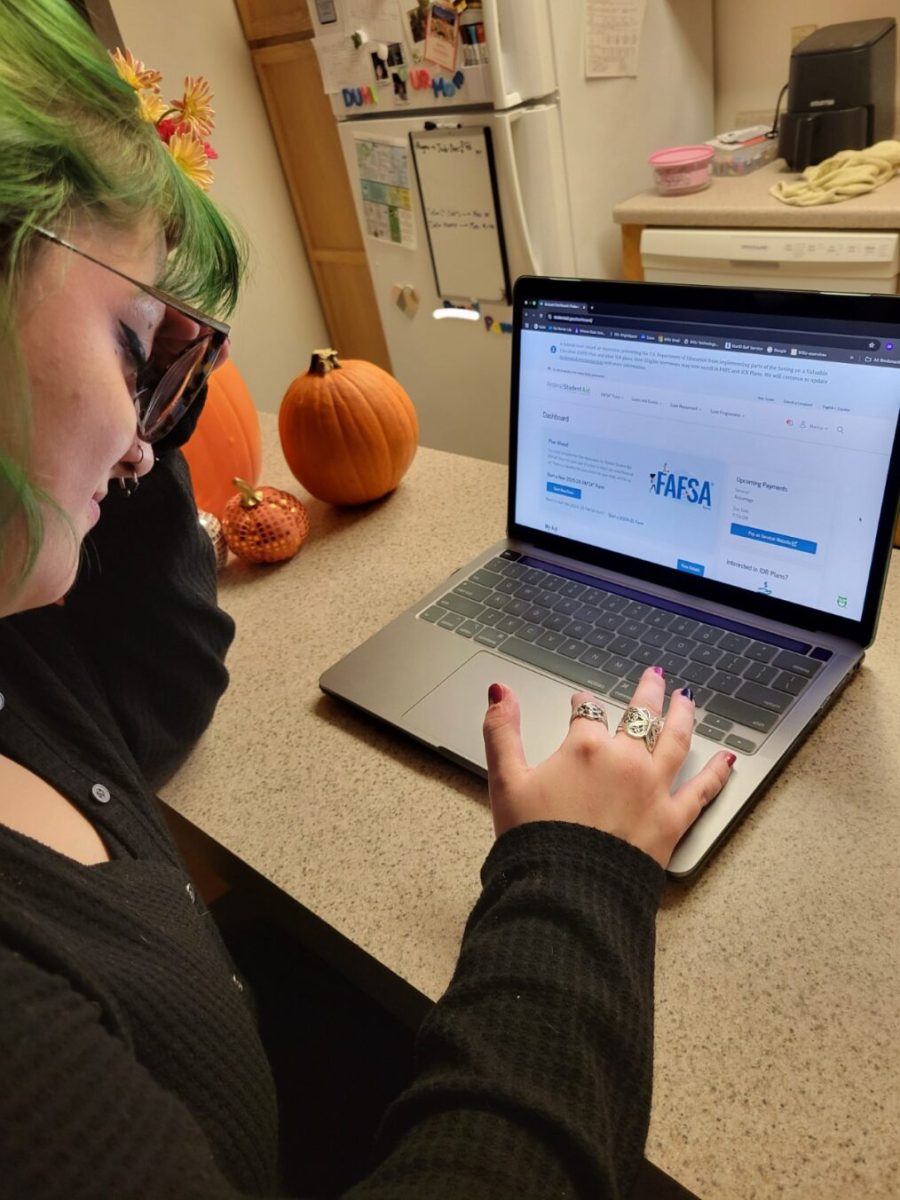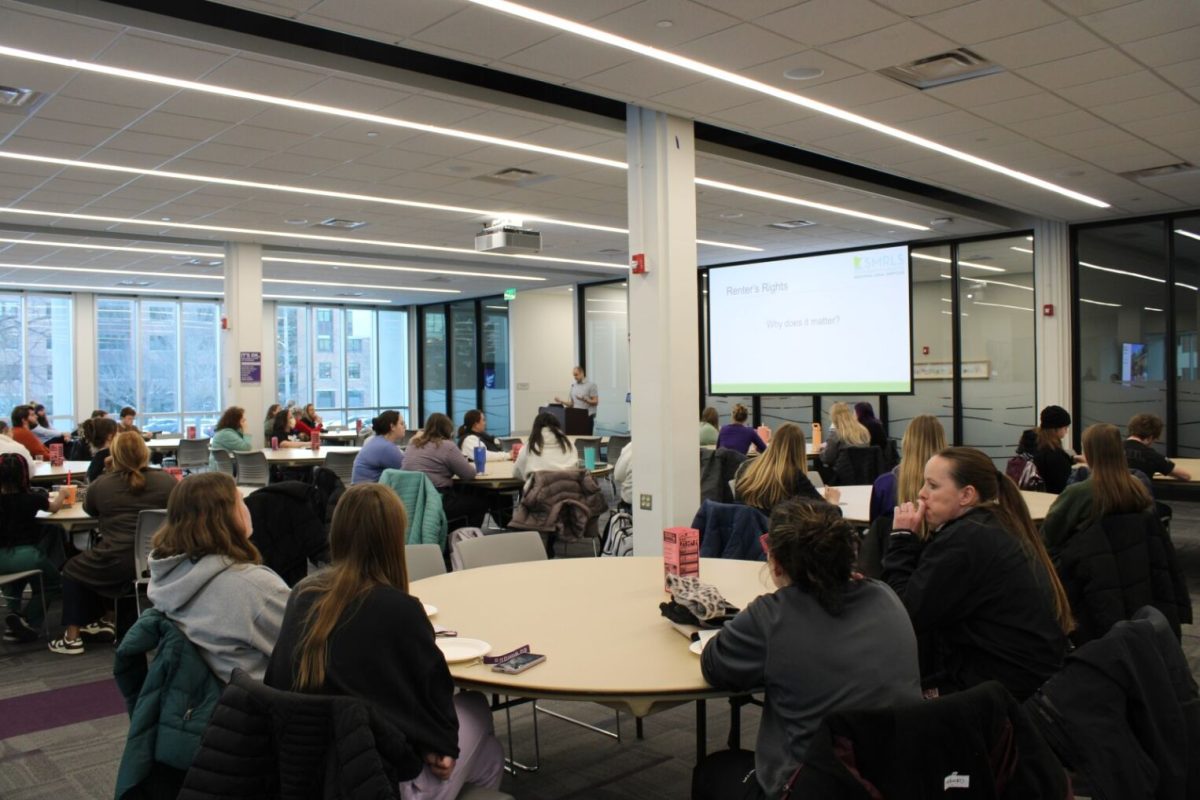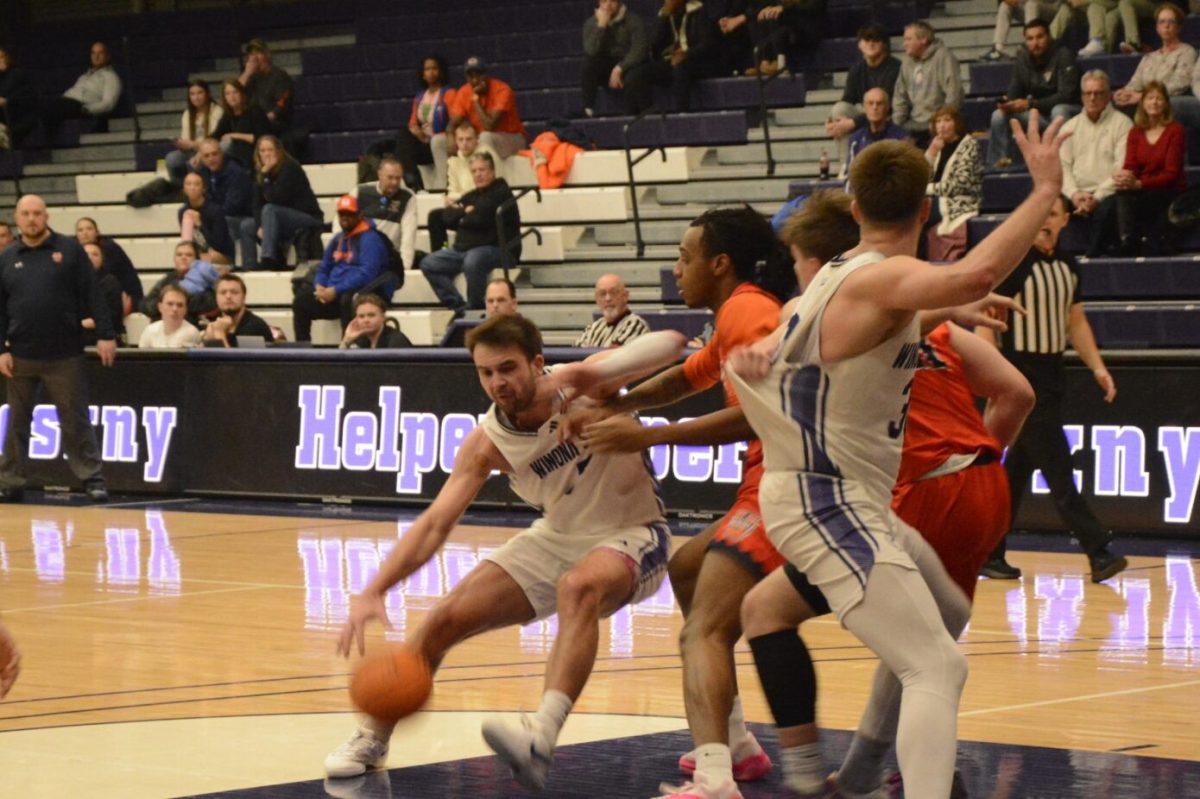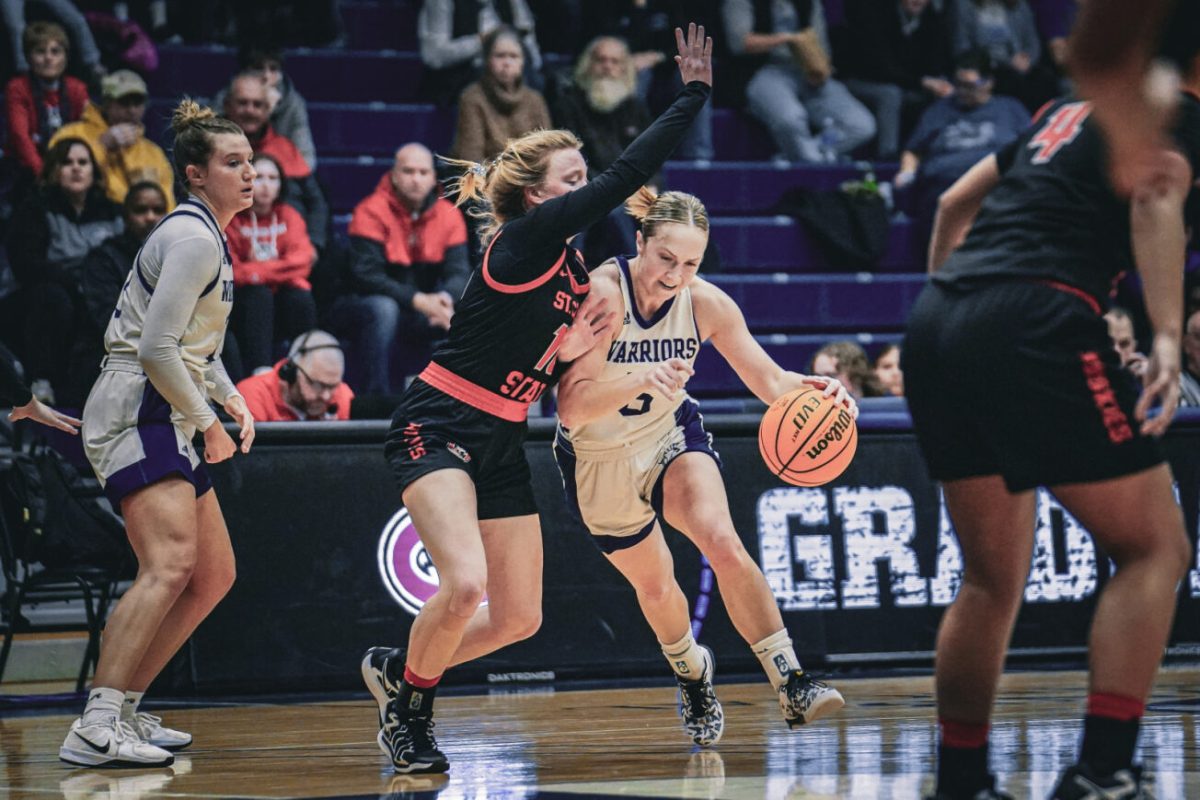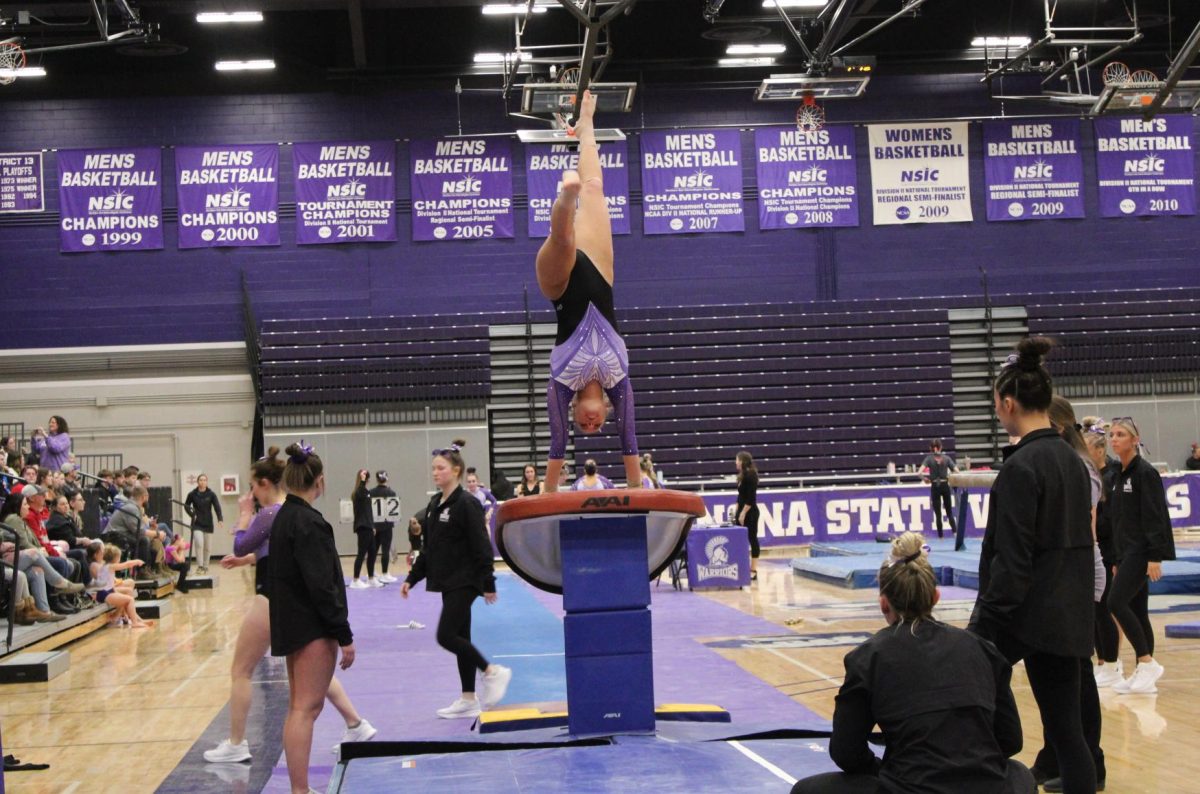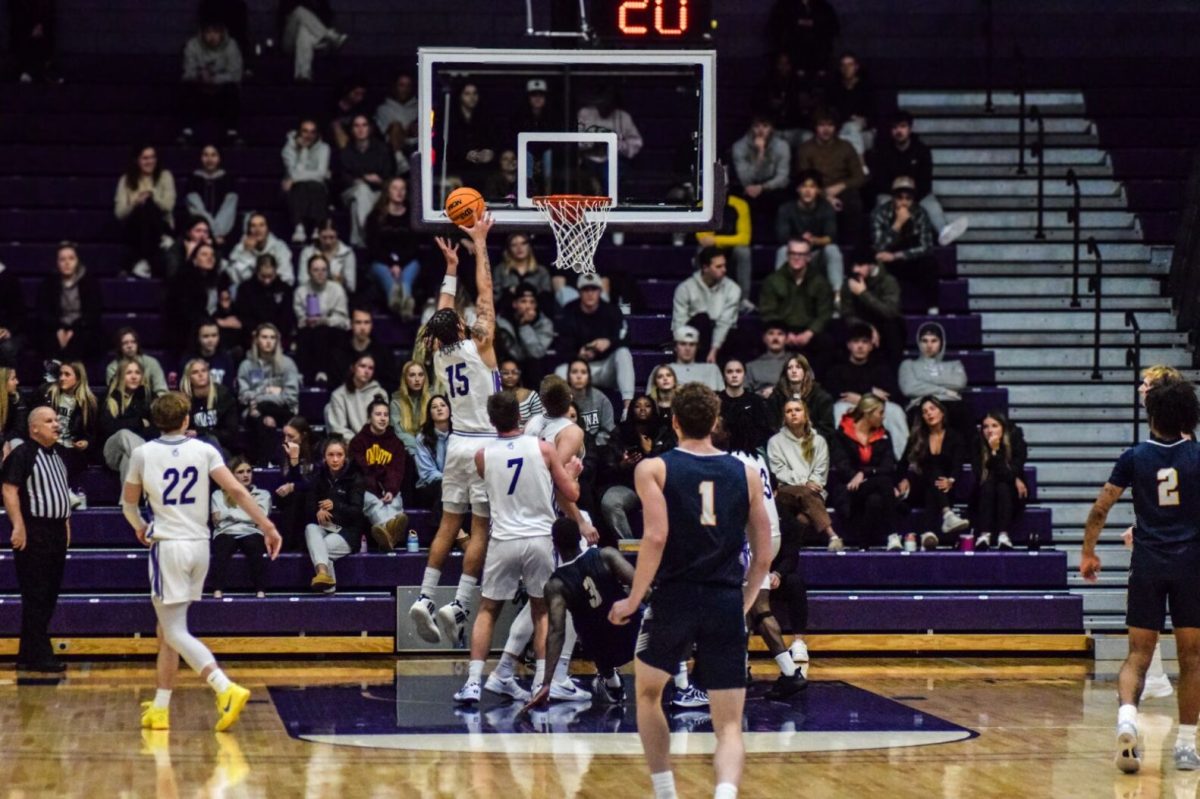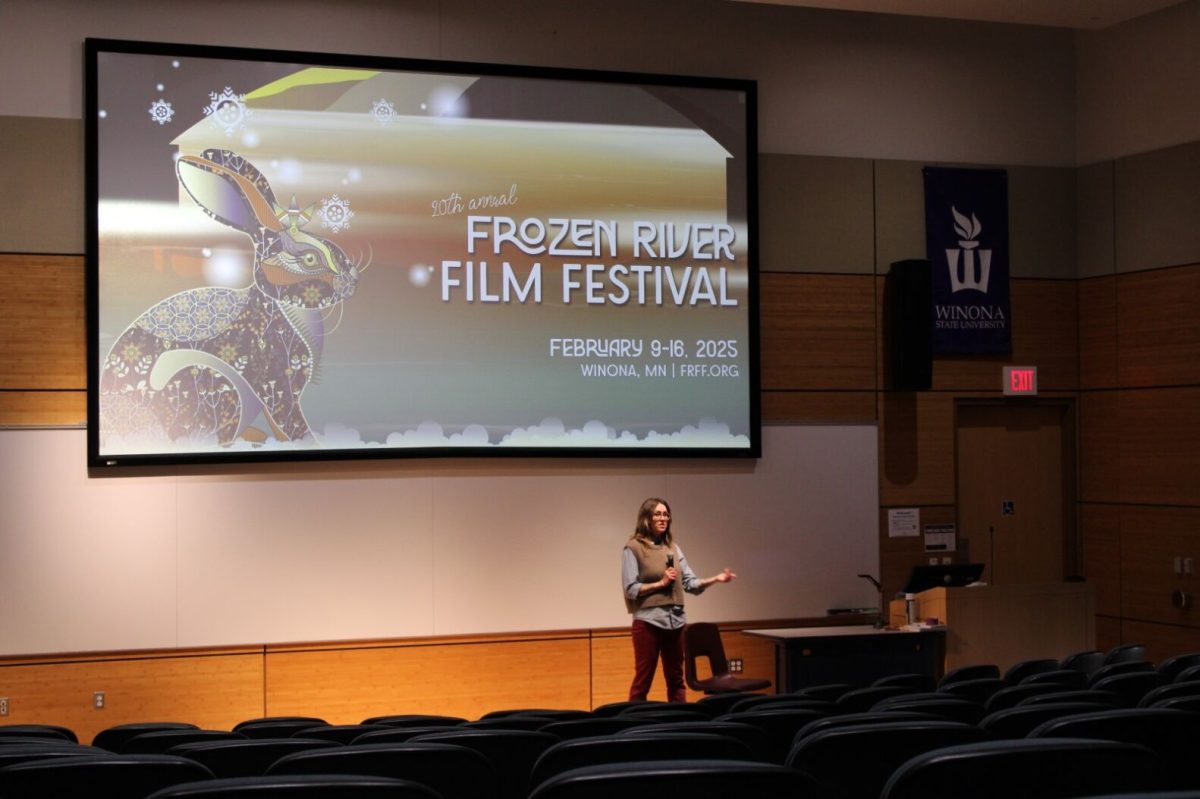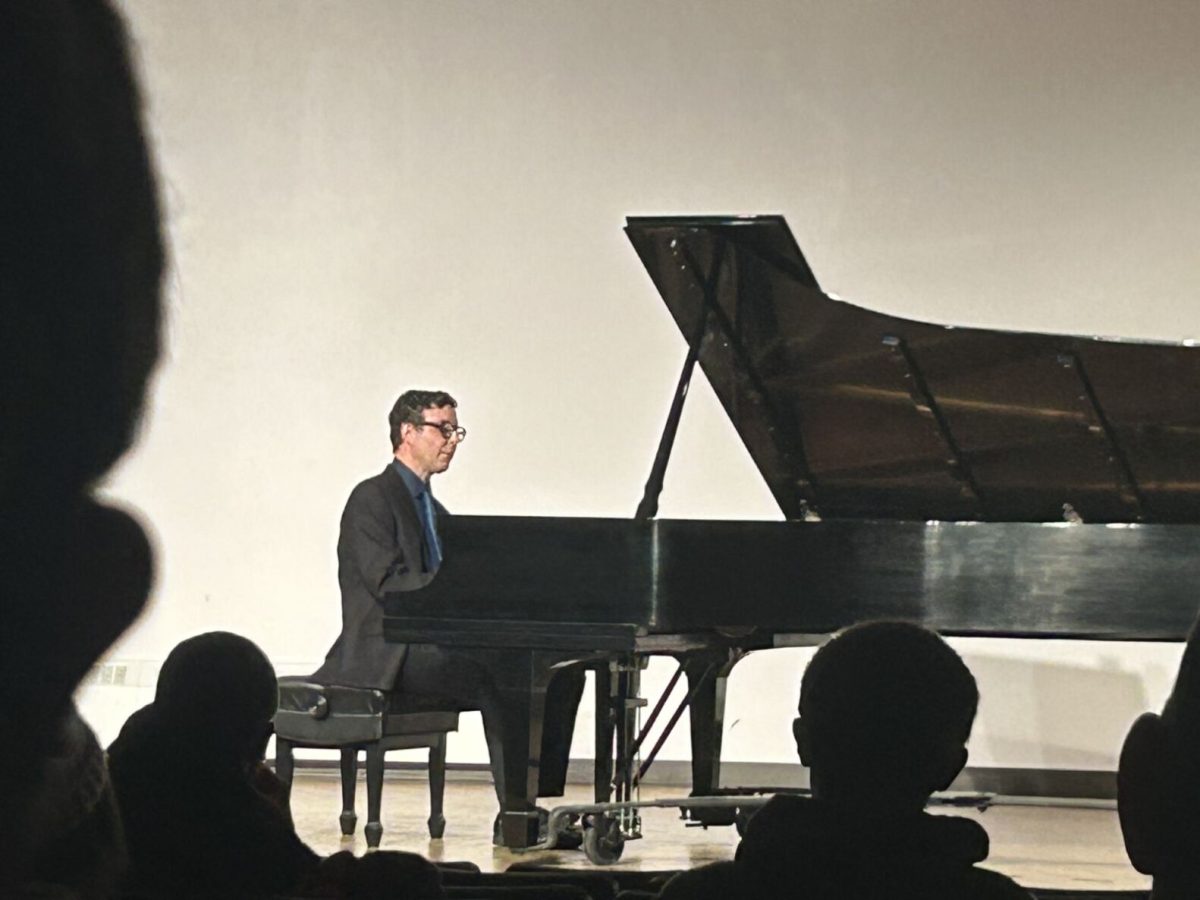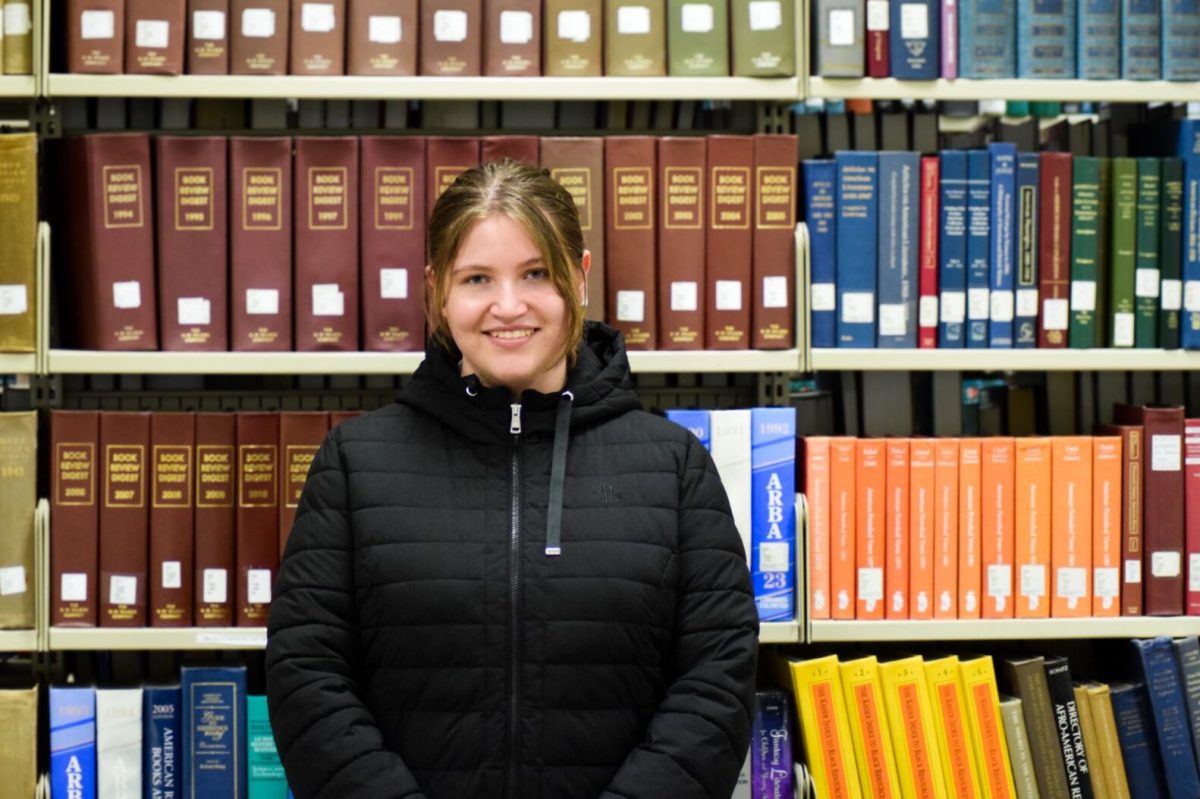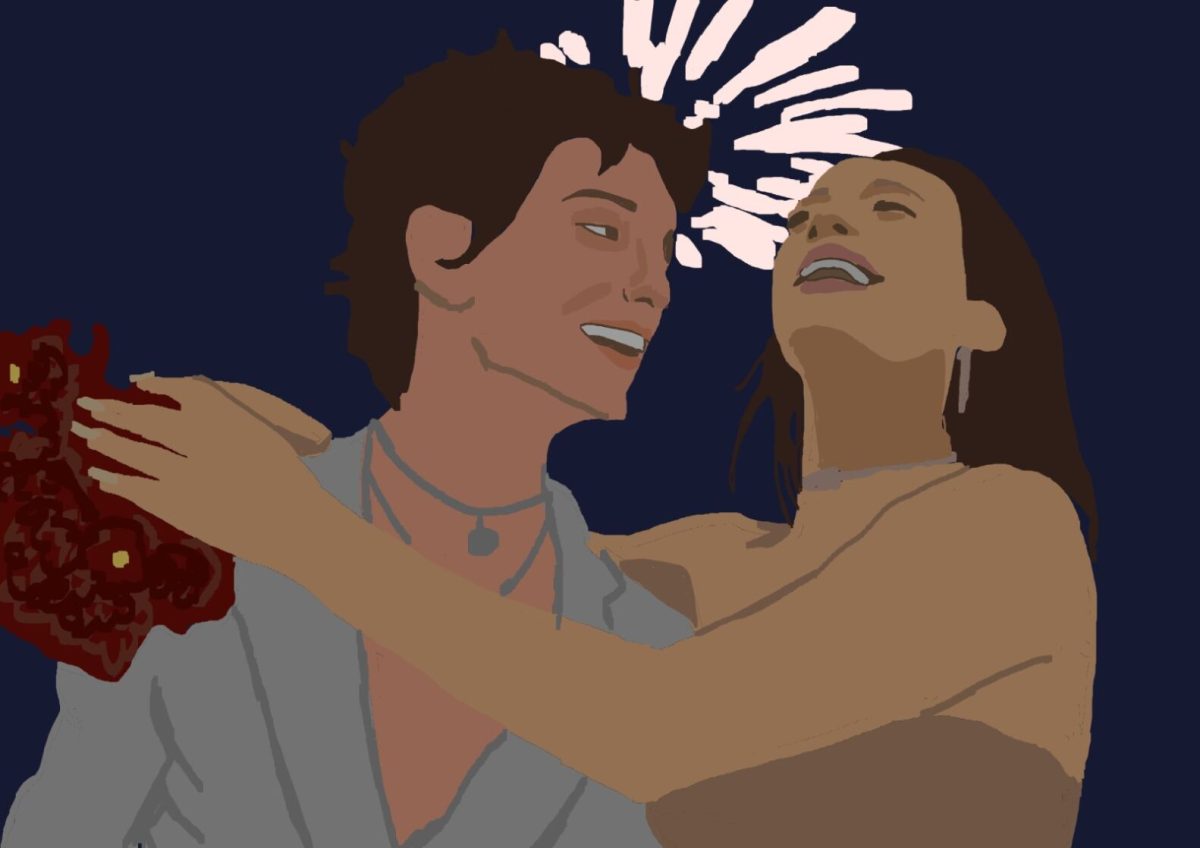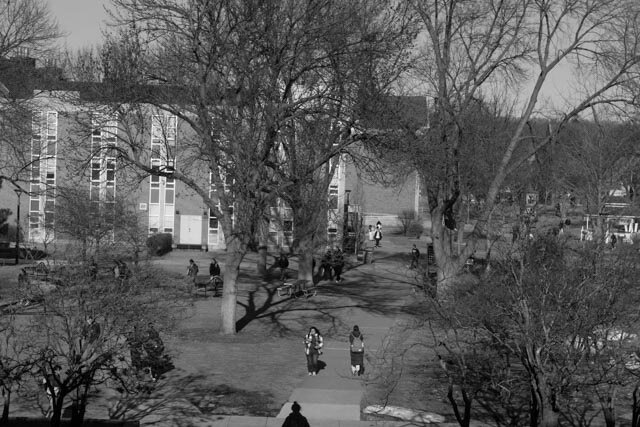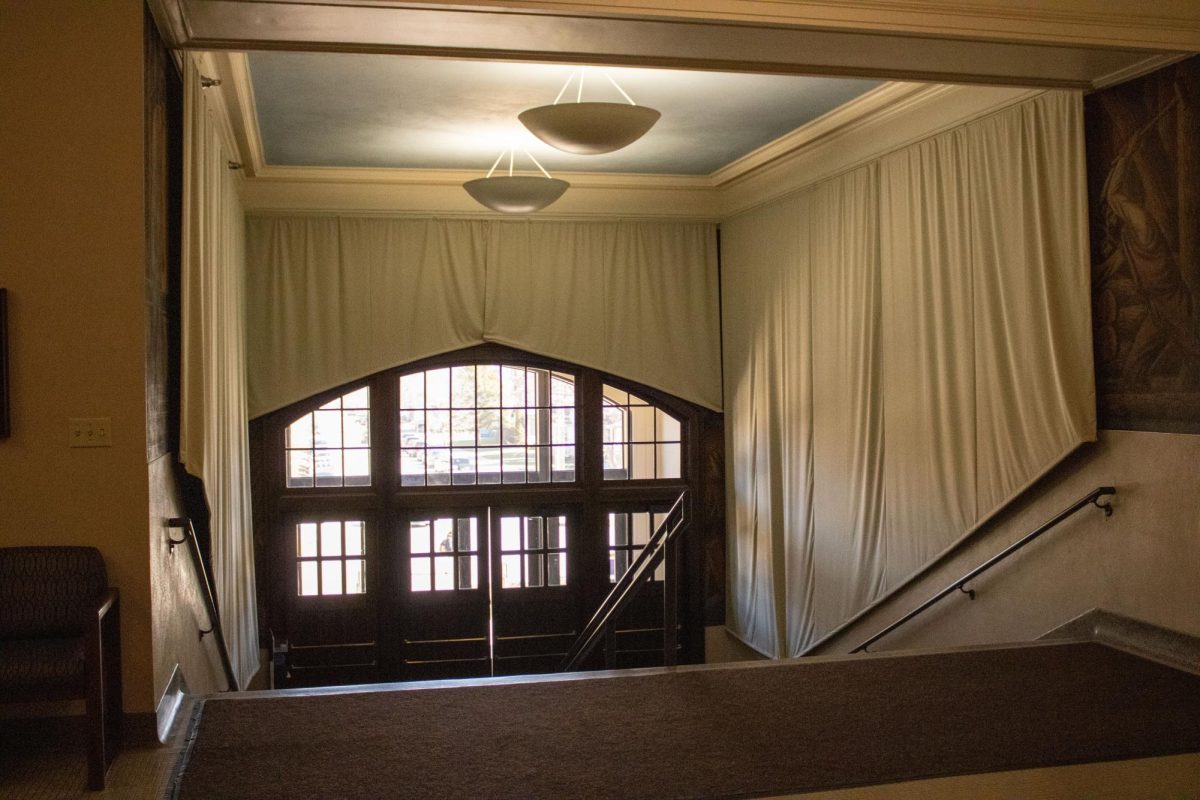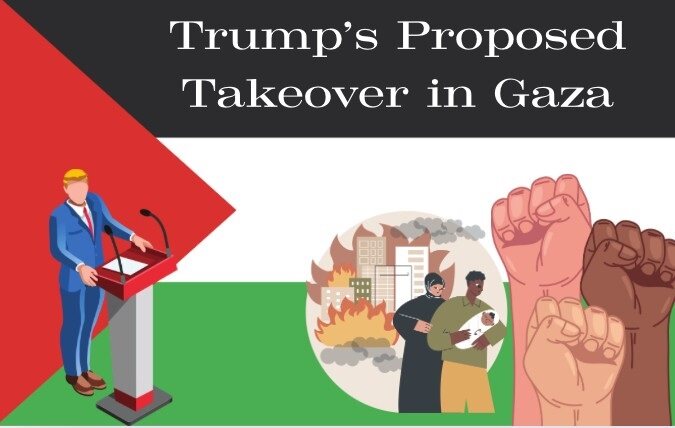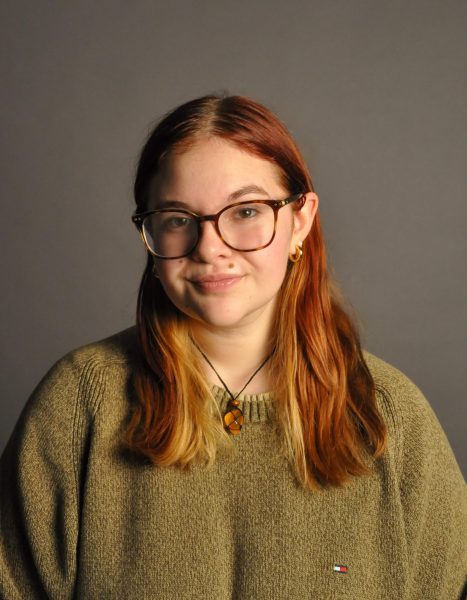It is read at the beginning of Winona State University events and meetings. ‘We recognize and acknowledge that WSU is situated on the ancestral lands of the Dakota people’ is said to all before they begin whatever they plan to do. The land recognition statement is part of the university’s mission and serves as a reminder of the commitment to investing in a sustainable future. Is it heard by all? Is the sacred land we are on now as a University recognized?
A mural in the entrance of Somsen Hall was commissioned in the 1930s as part of the Work Projects Administration (WPA). The mural’s purpose was to show the beginnings of Winona, however, the painter John Martin Socha, painted this mural with a “lens of mainstream ideology at the time” according to the piece commissioned in 2017 called “Somsen Hall Mural Context: The Founding of Winona and the Somsen Hall WPA Mural” by Iyekiyapiwin Darlene St. Clair form St. Cloud State University and Jill Ahlberg Yohe from Minneapolis Institute of Art.
“We’re displaying art that is traumatizing to parts of our own community that obviously is contradictory to the university’s mission. If we’re a community of learners improving our world and we do nothing about our own campus that not only doesn’t improve our world, but it actively hurts people, then that’s that’s not helpful to students, to the community, and to what we’re trying to do here.” Member of the Indigenous Relations, Education, and Programming Committee and WSU professor Roger Boulay who helped the piece in Somsen be commissioned said.
Some view the mural as a representation of the glamorized version of white settlers erasing Indigenous cultures with their own motions in the taking Indigenous land. The piece also notes that because of this ideology, the mural has “romanticized and inaccurate depictions of Indigenous people as “Noble Savages” are now recognized as demeaning in the 21st century.” according to the “Somsen Hall Mural Context: The Founding of Winona and the Somsen Hall WPA Mural”.
Another part of the huge iceberg of generational harm is caused by the inaccuracies of the mural. The treaties of 1862 took place between the Sisseton and Wahpeton bands of the Dakota and US government representatives Luke Lea and Alexander Ramsey to discuss two different treaties. According to the Traverse des Sioux, The first treaty was a promise from the US to “provide payments of cash, goods, education, and a reservation in exchange for their land.” After signed, the promise of a reservation was soon taken out of the treaties and the U.S kept 80% of the money that was written in the treaty that the Dakota people would’ve depended on in exchange for the land they hunted on for generations. According to the Traverse des Sioux, “The U.S took 24 million acres in present-day Minnesota, South Dakota, and Iowa.” This is part of the long and complex history told from many perspectives.
“1862 was clearly a seminal moment for the government and Indigenous relations in this region and there’s still a lot of pain associated with that time. There’s people who look at the mural and think that sort of depictions of Indigenous people in mural and the way, like over the doorway, there’s an Indigenous person and a Non-Indigenous person or a settler sort of shaking hands or meeting and that is an inaccurate way to describe formal meetings that might’ve resulted in a treaty at that time,” Boulay said. “It’s a very multifaceted, difficult piece of art to figure out what to do with.”
Throughout his career, Boulay has brought historians to campus who have written books about public art all over the country. His thoughts with the mural are to take a long approach in regards to the mural.
“Rushing into something is going to result in a decision about changing the mural or doing something to the mural that nobody’s happy with. It requires a great deal of research because there’s so many different perspectives and thoughts [from] a variety of folks to take into consideration. So we’ve been gathering all those different opinions, basically since I’ve worked here, which would be 2013.”
Boulay and many other faculty and students take on this work and conversation outside of their existing work. He highlights that whatever is done, it should be Indigenous-led.
“It shouldn’t be this additional thing, it should be the main thing..somebody in the university needs to hire Indigenous staff with issues like this as the central part of the work that they do at Winona State, because there’s just too much of a burden on faculty… there’s a bunch of faculty who have sort of taken this on because they know it’s important,” Boulay said. “Winona State needs an Indigenous studies program. It needs someone whose full-time job it is, is to sort of interact with regional Indigenous communities like Prairie Island and Shakopee.”
In addition to the commissioned piece, there is a plaque on the wall of the entrance of Somsen explaining the history, harm, and context of this mural along with a QR code to Open River to the piece. Even with the existence of the piece, it still doesn’t alleviate people from the impact of the mural.
“Some students have expressed the satisfaction with [the adding of the plaque] to me…We’ve had students recently along with faculty who think it’s time to take the next step,” Boulay said. “That’s what we’re hoping to work on in the coming weeks and then into the summer next year. There’s all differing opinions coming from Indigenous visitors to campus and a maritime Indigenous faculty about what to do about the mural.”
Current students, community members, faculty, and people touring and visiting the university express that the mural needs to be destroyed, some also figure that since it is an academic institution, it should be recognized as incorrect and sparks generational trauma. Some people believe it is a part of Winona’s history and should remain open to the public despite inaccuracies and the hurt that it will cause. As an institution, WSU had attempted to make the mural no longer harmful by covering it up in 2020.
“There’s some Indigenous visitors to campus before the mural was covered who felt traumatized looking at it. And so that was the reason why it was covered…I have stood in front of that mural with Indigenous people and they’ve cried. They’ve been so upset by looking at it,” Boulay said. “There’s Non-Indigenous people who looked at it and thought it was insulting and derogatory and had issues with it. It’s a very multifaceted, difficult piece of art to figure out what to do with…I don’t want people to feel that kind of pain at the place where I work and I consider part of my community.”
Currently, with the collective work from participating faculty, community members, and students, the conversation has led to three different possible options. While students won’t see a sudden change in August, the conversation of what to do with it is a complex conversation that cannot be solved quickly. One of the main obstacles being the restrictions form the university’s budget.
“Do you get rid of it? Do you destroy it or paint over it in some way that irrevocably makes it disappear? Do you continue to contextualize it like we started doing with the statements that you read on Open River and even go steps further and and commission arts by Indigenous people to stand alongside it? Or to provide a reflection to an alternative telling of the history of Winona?,” Boulay said. “There’s a lot of different possibilities. Do we need a cupboard slash? Do you do very little? So those are the kind of questions that we’re asking right now.”
Ideally, his role in this discussion process is to figure out a solution that all voices would agree with. This task is easier said than done when considering all perspectives. Whenever there is a controversial subject on a university campus, Boulay also highlights them when in these discussions to be as open to as many voices and perspectives as possible and to let them be heard.
“If Indigenous scholars and students all said you need to paint over it and destroy it now, I would go along with that…We’ve had some students who have brought [the conversation of what to do with the mural] back to the forefront of the sort of conversation on how Indigenous people are represented through images at our university, which is really important to have,” Boulay said.”We’re at a university, this is a place of learning. How can we learn from the negative stereotypes in the mural? Is it is it too convenient to just paint over something you don’t like? So I would personally try to commission or hire some Indigenous artists to create a response to the mural in some way. That would be my choice. But again, it’s not up to me. I’m just one voice in the room.”
In addition to conversations about the mural, the Office of Equity & Inclusive Excellence is a valuable on-campus source of information and support for students affected by the mural. Indigenous people deserve to be heard continuously through this process.
“Winona State University is committed to creating an inclusive campus environment. We can learn from our history, from the way we make decisions, how we approach and resolve conflict, the ways in which we examine and confront implicit bias. Our mission is to be a community of learners improving our world. I believe the way we engaged in this conversation is important,” WSU president Kenneth Janz comments. “The artwork should be preserved for educational purposes. The coverings installed are removable to allow for continued discussion and learning opportunities.”


